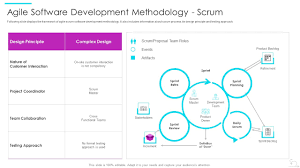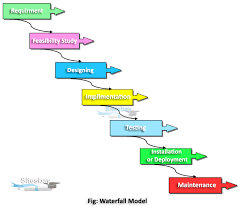Mastering Agile Software Development with Scrum: A Guide to Success
The Power of Agile Software Development with Scrum
Agile software development with Scrum has revolutionized the way teams approach and execute software projects. By embracing the principles of agility and collaboration, organizations can deliver high-quality products efficiently and adapt to changing requirements seamlessly.
Understanding Agile Software Development
Agile software development is a methodology that values flexibility, customer collaboration, and iterative development. It focuses on delivering working software in short iterations, allowing teams to quickly respond to feedback and changes in priorities.
The Role of Scrum in Agile Development
Scrum is a popular framework within the agile methodology that provides structure and guidance to teams. It emphasizes teamwork, accountability, and continuous improvement. In Scrum, work is organized into short iterations called sprints, typically lasting 2-4 weeks.
Key Components of Scrum
- Sprint Planning: At the beginning of each sprint, the team plans the work to be done and commits to delivering a set of features or user stories.
- Daily Stand-ups: Daily stand-up meetings keep the team aligned on progress, impediments, and upcoming work.
- Sprint Review: At the end of each sprint, the team demonstrates completed work to stakeholders for feedback.
- Retro…
Benefits of Agile Software Development with Scrum
The agile approach offers numerous benefits for software development teams:
- Rapid Adaptation: Teams can respond quickly to changing requirements and market conditions.
- Increased Collaboration: Close collaboration between team members fosters creativity and innovation.
- Early Delivery: Working software is delivered in short increments, providing value to customers sooner.
- Continuous Improvement: Regular retrospectives allow teams to reflect on their process and make adjustments for better efficiency.
In Conclusion
Agile software development with Scrum empowers teams to deliver high-quality products efficiently while adapting to change. By embracing agility and collaboration, organizations can stay competitive in today’s fast-paced market landscape.
6 Essential Tips for Mastering Agile Software Development with Scrum
- Ensure clear communication and collaboration among team members to promote transparency and efficiency.
- Prioritize tasks based on business value to deliver working software incrementally and frequently.
- Hold regular sprint planning, review, and retrospective meetings to evaluate progress and adapt accordingly.
- Empower the Scrum Master to remove impediments and facilitate a self-organizing team environment.
- Use visual boards like Kanban or Scrum boards to track progress and keep everyone informed about the project status.
- Encourage continuous improvement by fostering a culture of learning, feedback, and adaptation within the team.
Ensure clear communication and collaboration among team members to promote transparency and efficiency.
Ensuring clear communication and fostering collaboration among team members is a crucial tip in agile software development with Scrum. By promoting transparency and efficiency through effective communication, team members can align on project goals, share knowledge, and address any challenges promptly. Transparent communication helps build trust within the team and ensures that everyone is on the same page, leading to smoother workflow and improved productivity throughout the development process.
Prioritize tasks based on business value to deliver working software incrementally and frequently.
In agile software development with Scrum, prioritizing tasks based on business value is crucial for delivering working software incrementally and frequently. By focusing on the most valuable features first, teams can ensure that the product delivers maximum benefit to the business and end-users. This approach allows for early delivery of key functionalities, enabling stakeholders to provide feedback and make informed decisions throughout the development process. Prioritizing tasks based on business value not only accelerates time-to-market but also ensures that resources are allocated efficiently to deliver a product that aligns with the organization’s strategic objectives.
Hold regular sprint planning, review, and retrospective meetings to evaluate progress and adapt accordingly.
Regular sprint planning, review, and retrospective meetings are essential components of agile software development with Scrum. These meetings provide teams with the opportunity to evaluate their progress, gather feedback, and make necessary adjustments to enhance efficiency and productivity. Sprint planning sets the direction for the upcoming work, ensuring that the team is aligned on goals and priorities. Sprint review allows stakeholders to provide valuable input on the delivered work, fostering collaboration and transparency. The retrospective meeting enables teams to reflect on their processes, identify areas for improvement, and implement changes for continuous growth. By holding these meetings consistently, teams can adapt quickly to changes, optimize their workflow, and deliver high-quality products effectively.
Empower the Scrum Master to remove impediments and facilitate a self-organizing team environment.
To optimize agile software development with Scrum, it is crucial to empower the Scrum Master to proactively address impediments and foster a self-organizing team culture. By entrusting the Scrum Master with the authority to remove obstacles hindering progress and facilitating an environment where team members can collaborate autonomously, efficiency and innovation are enhanced. This empowerment not only streamlines workflow but also promotes a sense of ownership and accountability within the team, ultimately leading to successful project outcomes.
Use visual boards like Kanban or Scrum boards to track progress and keep everyone informed about the project status.
Utilizing visual boards such as Kanban or Scrum boards is a valuable tip in agile software development with Scrum. These visual tools provide a clear and transparent way to track progress, visualize tasks, and keep everyone informed about the project status. By having a centralized place where team members can see what tasks are in progress, what’s completed, and what’s upcoming, communication is enhanced, and potential bottlenecks can be identified and addressed promptly. Visual boards promote collaboration, accountability, and efficiency within the team, ultimately contributing to the successful delivery of high-quality software products.
Encourage continuous improvement by fostering a culture of learning, feedback, and adaptation within the team.
Encouraging continuous improvement in agile software development with Scrum involves fostering a culture of learning, feedback, and adaptation within the team. By creating an environment where team members are encouraged to seek knowledge, share insights, and provide constructive feedback, organizations can drive innovation and enhance productivity. Embracing a mindset of continuous learning and adaptation not only leads to better outcomes in software development projects but also cultivates a sense of collaboration and growth within the team.





